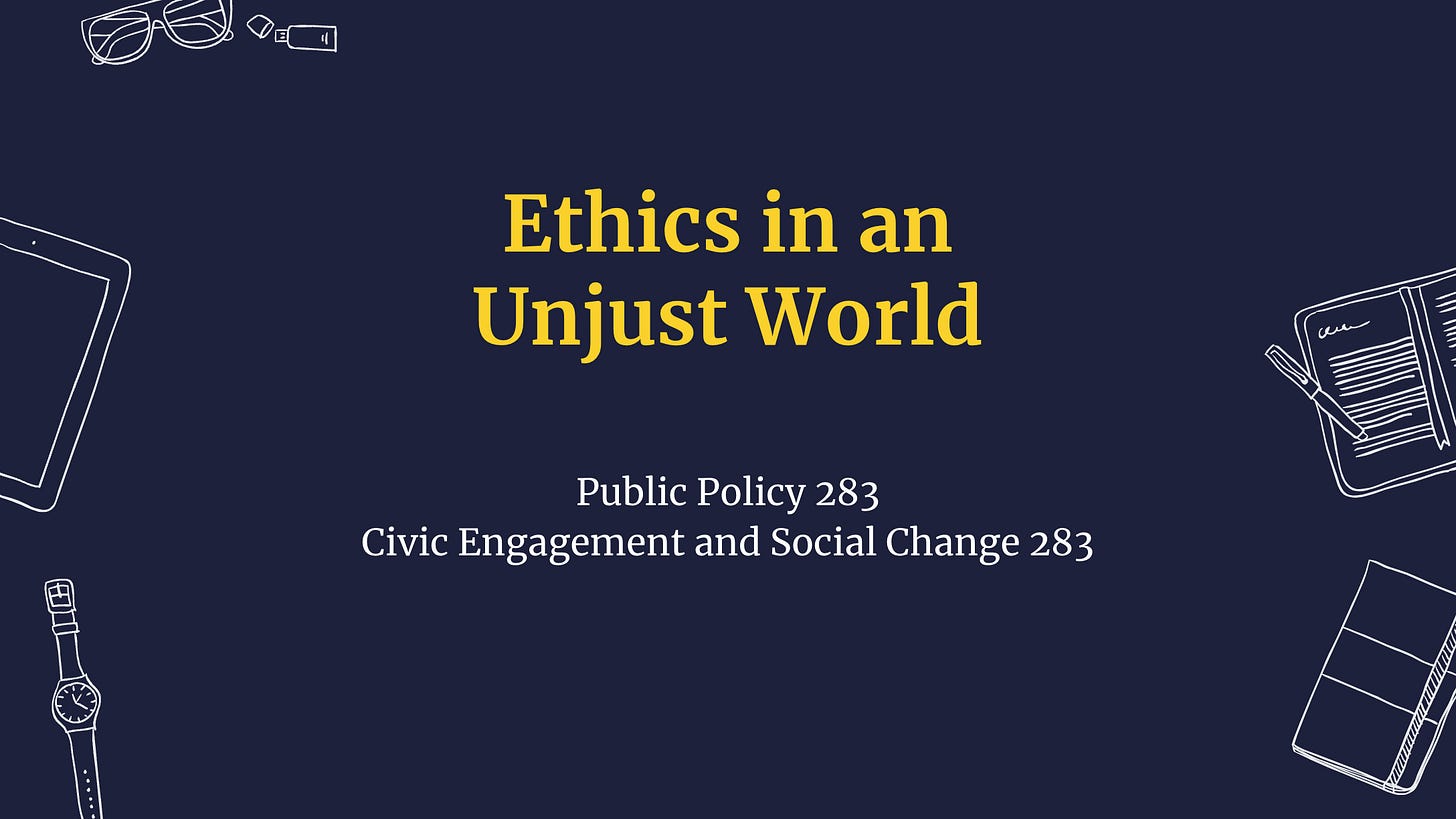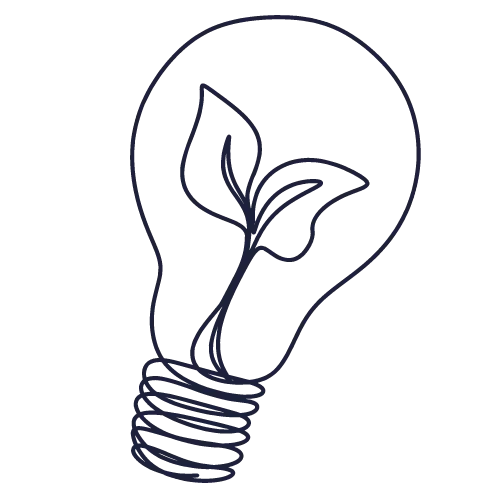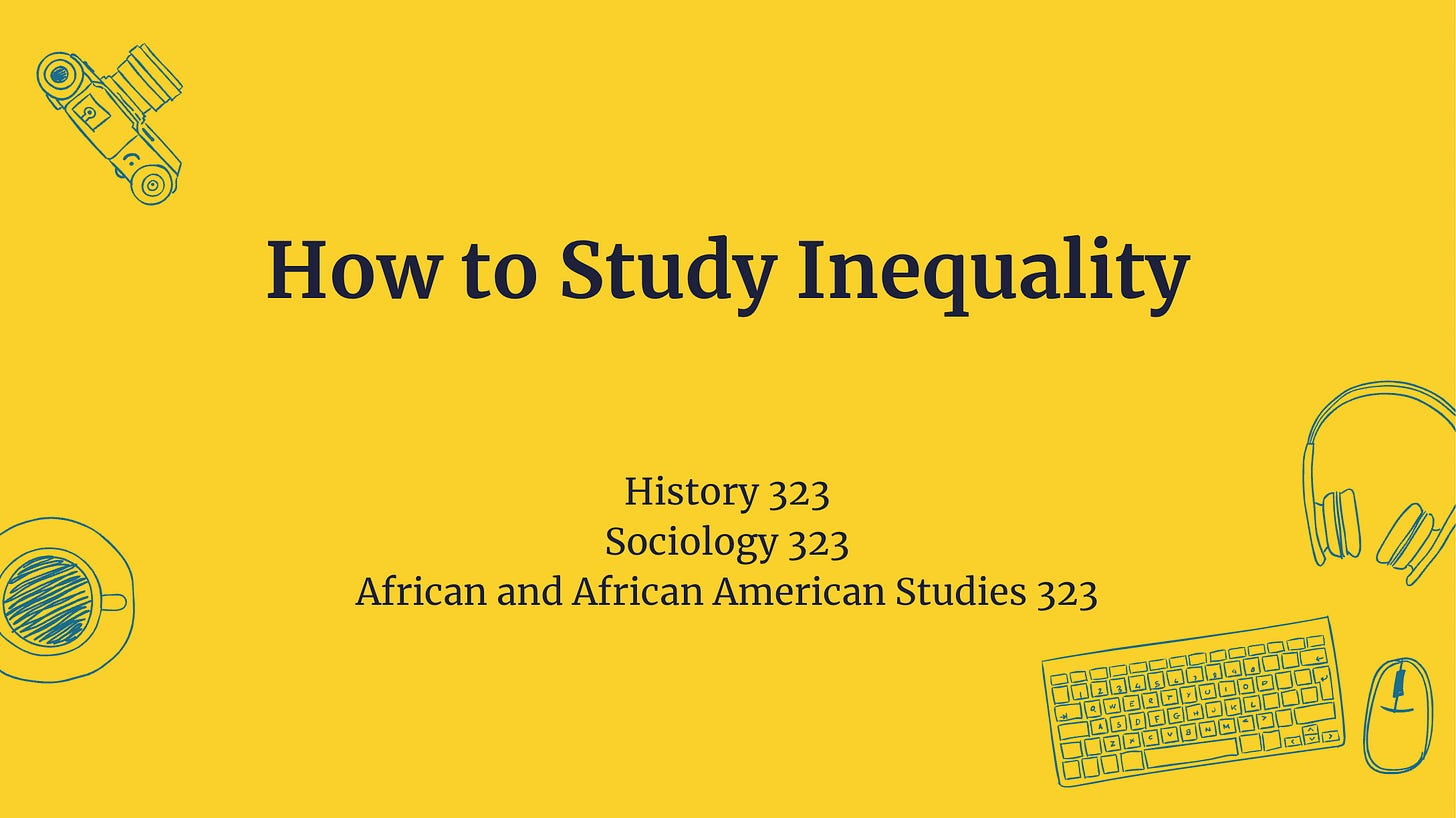What Do You Teach? (Part One)
Notes on three college courses and why I teach them.
Welcome to From the Ethics Desk! Share this post, support this publication, or learn more about me, Adam Hollowell. Thanks for reading. I’m glad you’re here!
“What do you teach?”
I get this question from students, colleagues, friends, and family. Occasionally I get it from readers of From the Ethics Desk, too, so I’m dedicating this week’s newsletter to answering it. Well, part of it. (You can read Part Two here.)
First, a little context. Most “regular rank” professors teach a handful of different courses originating in one or two departments. How often these courses are offered will depend on the job classification. If the professor is a “teaching” professor, they may have a 3/3 load, meaning they teach three classes in the fall semester and three classes in the spring semester. Some teaching professors have a 4/4. (That’s a lot of teaching.) Research professors may have a 1/1 or a 2/2, with their non-teaching time dedicated to research in their field.
I’m in a different position. As director of the Inequality Studies minor and the Global Inequality Research Initiative at the Cook Center on Social Equity, I oversee a minimum of five courses in History and Public Policy associated with the minor each academic year. I teach all of these courses at various times, but I don’t teach all five every year. In addition, I’m eligible to accept adjunct teaching assignments in other areas of the university based on my availability. The Sanford School of Public Policy has hired me as an adjunct to teach the same course—Ethics in an Unjust World—once per year for the past 13 years. In other years the Kenan Institute for Ethics has hired me to teach a course in their What Now network. Previous to that I taught adjunct seminar courses in Religious Studies, Public Policy, and Duke’s Focus program for first-year students.
In other words, my answer to “What do you teach?” can vary pretty widely from semester to semester. Over the years I have taught more than 15 different courses across five different departments. That’s a lot to keep track of, even for me, which is why I said I could only answer part of the question.
Still, let’s start with three courses. Here’s what I teach and why I teach it.
Ethics in an Unjust World (Public Policy 283; Civic Engagement and Social Change 283)
Background: In 2009 Sam Wells, then Dean of Duke Chapel, hired me fresh off of my PhD and asked me to serve as course organizer and teaching assistant for his popular course titled Ethics in an Unjust World. When he left Duke a few years later, I inherited the course and made it my own. I’ve been teaching it ever since.
Course Description: This course considers the question, "How can we fix injustice?" We begin by exploring the nature of injustice through the lens of poverty. We examine descriptive metaphors of poverty (e.g., poverty as a "trap" or a “disease”) and the implications of each metaphor for social action. We then consider the word "fix,” and introduce several classical and emergent understandings of ethics (deontology, utilitarianism, virtue ethics, feminist ethics, quantum ethics, etc.). Finally, we consider the word "we" and offers three models for responding to injustice: working for, working with, and being with.
Course Objectives:
To build knowledge of key philosophical, political, and social approaches to ethics.
To develop skills in understanding common motivations and assumptions in work to address injustice.
To explore a range of contemporary approaches to social change.
To enable students to locate their own commitments and aptitudes within three modes of engagement: working for, working with, and being with.
Why I teach it: A student once complained to me about philosophy, saying, “So I have all this theory now. What am I supposed to do with it?” I love the depth of academic study, but I will always bring my teaching back to practical action to leave this place better than we found it. That’s what this course is about. Plus, we never run out of topics. (In recent years I have started putting a list of books I haven’t read about social change into a poll and having students vote on which books and chapters they most want to read. This keeps me on my toes!) Ultimately, this class is about changing the world. Who wouldn’t want to spend a semester talking with college students about that?
How to Study Inequality (History 323; Sociology 323; AAAS 323)
Background: In 2020 the Cook Center and the History Department created Duke’s new Inequality Studies minor. I organized this effort and, in 2021, designed and taught two new minor courses: History of Inequality (HIST 288) and Methods in Inequality Studies (HIST 323). In 2024 we re-named the second course How to Study Inequality, hoping a sexier title might help with enrollment.
Course Description: The course trains students to approach interdisciplinary social science research from the perspective of Inequality Studies. It interrogates the historical link between scientific inquiry and colonial violence while elevating emerging subversive reinventions of quantitative, archival, qualitative, and mixed methods research. Students can expect to gain an understanding of the inter-related forces of science and society—e.g., how pre-existing social inequalities can impact efforts to conduct social sciences research and how unethical social science research can worsen existing social inequalities. Students will learn how to explore un- and under-studied phenomena within the study of inequality through conceiving, planning, and evaluating research projects, including consideration of diverse research paradigms, ethical dilemmas in the field, and theories and methods to undertake systematic modes of inquiry.
Course Objectives:
Interrogate the history of violence within social science research methods.
Conceptualize Inequality Studies research within contexts of social stratification.
Map subversive reinventions of social science research methods.
Practice research critique and design within Inequality Studies.
Why I teach it: When we designed this course for the new curriculum in Inequality Studies, our goal was to provide insight into ways social science research has “gone wrong” and how justice-oriented researchers aim to “do better.” Most of the students in this course will have taken research methods courses in other departments at the university, which gives us an opportunity to explore what they did (or didn’t) cover about inequality research in their other classes. For me personally, this course is a reflection of my growth as a thinker, teacher, and researcher in the years since I finished graduate school. My PhD is in Religious Studies, a discipline in the humanities. I now teach in History, Education, and Public Policy, all social science disciplines. Many of the things I wish I’d learned in graduate school appear on the syllabus for this course.
Education as Liberation (Education 89S, Ethics 89S, Public Policy 89S)
Background: In 2019 the Kenan Institute for Ethics invited me to develop a new course for their What Now network. Courses in this network provide first-year students with opportunities to think about what drives them, what habits will lead to success in college, and how to have some fun along the way. Originally titled Organizing for Equity, the course I pitched later became Education as Liberation.
Course Description: I schedule this course on Fridays, then ask the first-year students why they’ve accepted a pre-determined syllabus at the start of each course during their first week of college. “How can a complete stranger already know what you need to learn?” I ask them. I organize this class around four questions. The first two concern education: What do you know? What do you want to learn? The second two concern liberation: What holds us captive? How do we get free? I actively involve students in the creation of the course and we build the syllabus together.
Course Objectives: This course doesn’t have pre-set learning objectives. Instead, we fill the walls with post-it notes of ideas, aspirations, and possibilities, then work collectively to determine course goals, assignment formats, and the best ways to spend our time together. (Image below.) Every semester is different. Every semester is a lot of fun.
Why I teach it: Because you never know what will happen! The beauty of this course is its open-ended, collaborative format. The students are initially shocked, because they’ve never taken a course like this before. But they are also first-year students, so they don’t have too many preconceived ideas about what is supposed to happen. Just another wacky professor, right? (Every year I think about standing on the desk and shouting “Oh Captain My Captain!” when they leave the room, but they’d never get the reference.)
That’s it for What Do You Teach? (Part One). To make sure you receive Part Two in the months ahead, be sure to subscribe!









